Aquaculture Reproduction Innovations
Innovations in aquaculture reproduction focus on improving the breeding and spawning of farmed fish to enhance production efficiency and sustainability. Techniques such as selective breeding, genetic modification, and induced spawning have revolutionized the industry. Selective breeding is used to develop fish with desirable traits, such as faster growth or disease resistance. Hormonal treatments and controlled environmental conditions are employed to induce spawning, ensuring year-round breeding cycles and higher yields. Genetic advancements also help in producing sterile fish populations, reducing the risk of invasive species in wild ecosystems. These innovations are essential in meeting the growing demand for seafood while minimizing the impact on natural fish stocks, allowing for more sustainable and controlled fish farming practices.

Perry Raso
Matunuck Oyster Farm, United States
J L Giovanna Hesley
Education Emerita, CropKing Inc., United States
Virendra Kumar Goswami
Indian Institute of Technology, India
Amit Das
Memorial University of Newfoundland, Canada
Mandeep Kaur
Panjab University, India
Pavarot Noranarttragoon
Department of Fisheries, Thailand



Title : Application of Artificial Intelligence and NISAR satellite to study the air sea CO2 exchange and aquatic toxicology to develop ‘Aquatic Pollution Remediation Technologies’(PART)
Virendra Kumar Goswami, Indian Institute of Technology, India
Title : Conditionally pathogenic microparasites (Microsporidia and Myxosporea) of mullet fish potential objects of mariculture in the Black and Azov Seas
Violetta M Yurakhno, A. O. Kovalevsky Institute of Biology of the Southern Seas of Russian Academy of Sciences, Russian Federation
Title : New approaches to assessing and managing the multispecies fishery in the Gulf of Thailand
Pavarot Noranarttragoon, Department of Fisheries, Thailand
Title : Integrating art, science and rural development: The multifaced role of aquarium keeping
T V Anna Mercy, Kerala University of Fisheries and Ocean Studies, India
Title : Seaweed aquaculture policy gap analyses in Indonesia, Kenya, and Tanzania
Megan Considine, The Nature Conservancy, Puerto Rico
Title : Utilizing art to enhance learning STEM subjects required for aquaculture
J L Giovanna Hesley, Education Emerita, CropKing Inc., United States